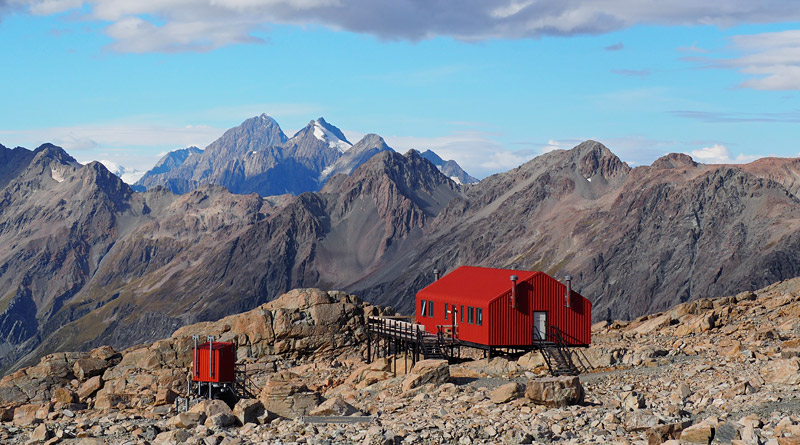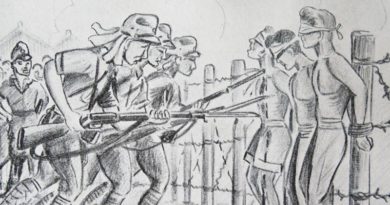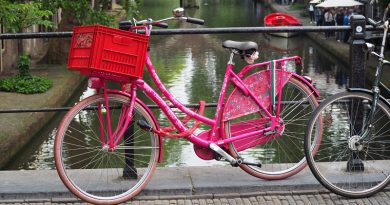Mueller Hut, Mt Cook National Park: Is this NZ’s best overnight walk?
Well? Is it the best overnight walk in New Zealand? Maybe, maybe not. But that doubt arises only because this is a country almost embarrassingly well endowed with extraordinary scenery and great hiking.
All the same, the trip to Mueller Hut, which perches on a mountainside 1800 metres above sea level, would surely have to rate at least in the top ten.
You can of course walk to Mueller Hut and back in a day, but — unless time is tragically short or every bunk is reserved — why would you?
You’d be missing the chance to while away a few hours watching the sun set over Aoraki Mt Cook and listening to avalanches thundering down the mountainsides across the valley. Plus you’d miss the chance to spend an evening in the company of like-minded hikers, and you mightn’t see the kea show. But more about that later.
| Mueller Hut Highlights
• Watching the sun set over New Zealand’s highest peaks. |
The walk up to Mueller Hut starts at the White Horse Hill car park, about 3km from Mt Cook Village. It gets very busy here in summer so it’s best to arrive early, and don’t follow the crowds — they’ll be heading for the massively popular Hooker Valley Track. The Mueller Hut Track is in the opposite direction, west from the car park.
The first section is an easy amble across the valley floor until you cross a swing bridge over a precipitous stream. At that point it turns into a 90-minute slog as a seemingly endless series of steps climbs steeply up the mountainside. I lost count but there’d be thousands of steps.
The staircase ends at Sealy Tarns, a pair of small lakes scooped out by a long-melted glacier. The tarns themselves are underwhelming but it’s a good rest stop and the views, across Mueller Lake and a textbook lateral moraine to Aoraki Mt Cook, are spectacular. You can see why the first people to see the peak gave it a name that translates as “cloud piercer”.
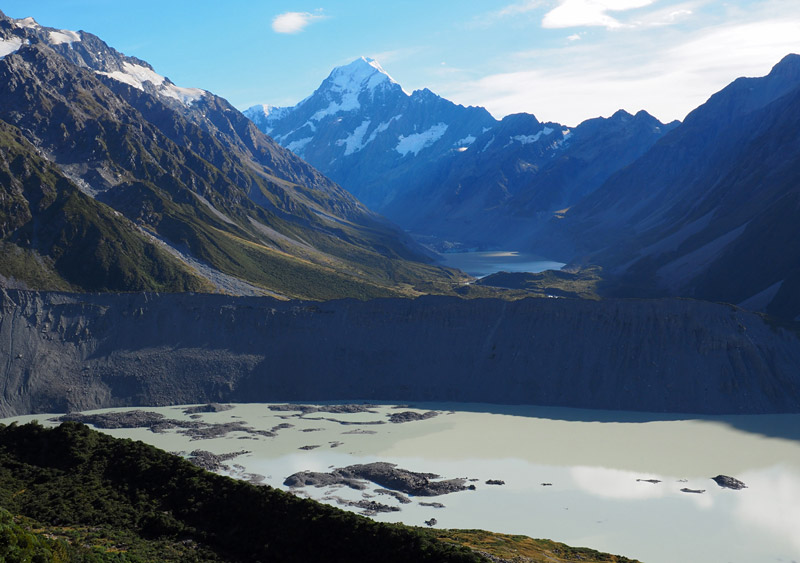
Many day walkers go no further than the tarns. From this point the track gets a lot tougher as the painstakingly built steps are replaced by a rough route marked by poles only. It’s steep, there’s a lot of loose rock, and it feels interminable.
After another 90 minutes the track abruptly levels off at a bouldery plateau and another extraordinary view opens out. This time the visual treat is across the Mueller Glacier to a row of snow-capped, 2500-metre peaks.
This is also where, especially in spring or summer, you’ll start hearing avalanches roaring down the other side of the valley. If you’re lucky, you’ll also hear the raucous, laughter-like call of the kea, the world’s only Alpine parrot.
From here it’s only another half hour to the hut, which is painted fire-engine red and visible long before you arrive. It perches on stilts to keep it from being crushed by winter ice and snow, like some weird kind of space craft landed on a hostile, rocky planet.
Soon after I reached the hut a gang of seven young kea turned up, all bent on making trouble. These inquisitive, highly intelligent birds spent more than two hours cavorting on the roof, playfighting, trying to break things, and strutting for the cameras. I even spotted one sliding down a handrail.
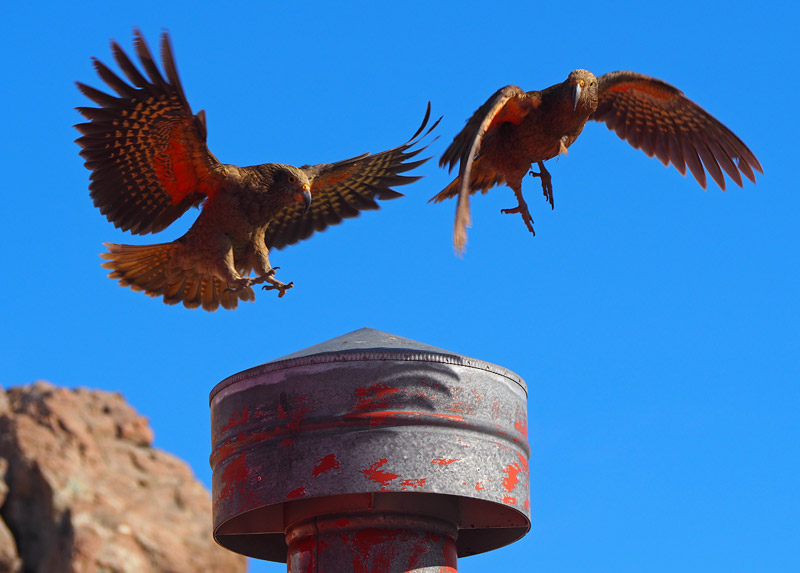
If you have energy and daylight left you can hike to the top of Mt Ollivier (1933m), which rises immediately behind the hut. There’s no trail as such but you can follow a series of cairns up the ridge. It’s an enjoyable scramble with only one genuinely gnarly section you need to climb over or scramble around. It takes about half an hour to the top.
Mt Ollivier was the first peak Sir Edmund Hillary climbed as a 20-something-year-old, long before he contemplated the world’s highest peak. That’s what Dan the hut warden told me anyway.
Returning to White Horse Hill car park is by the same route. The way down took me about two and a quarter hours, compared to almost four and a half for the ascent.
Practicalities
Where to stay
Personally I don’t like staying at Mt Cook Village. Accommodation is limited and eye-wateringly expensive. When I visited in March 2024 the only backpackers lodge in the village, Haka House, charged an eyewatering $130 a night for a bed in a crowded dorm (!).
There are also few supplies to be found in Mt Cook Village. You should bring all the food you need.
Twizel, a 50-minute or 70km drive away at the other end of Lake Pukaki, has plenty of budget accommodation (though even Twizel can fill up in summer) plus a supermarket. Staying in Twizel may mean you have to get up ridiculously early, but the reward is seeing the sun’s first rays light up Aoraki Mt Cook across the electric-blue waters of Lake Pukaki.
If you have camping gear, and you’ve booked well in advance, you can camp at the DOC White Horse Hill campground. The facilities are basic and the nights are cold but the location is unbeatable.
There’s also a private campground with tent sites and cabins at Glentanner, by the shore of Lake Pukaki and beside State Highway 80, about 25km from Mt Cook Village.
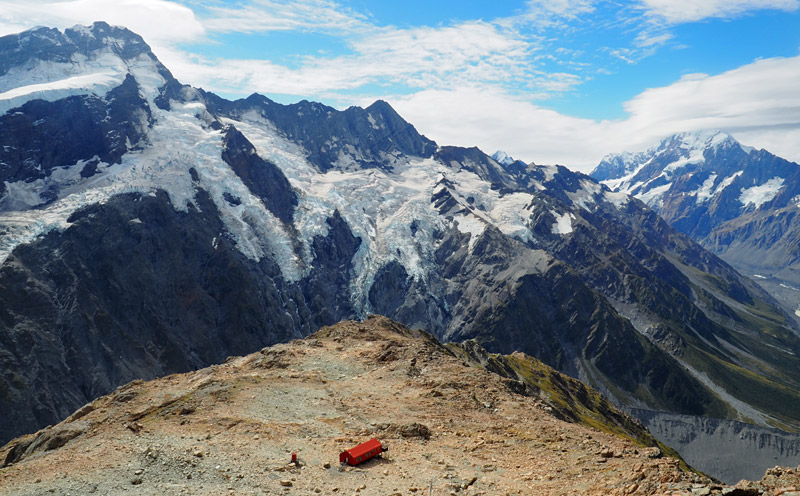
The hut
As with all trampers’ accommodation in New Zealand, a system of hut etiquette applies at modern Mueller Hut.
That includes not wearing boots inside (but don’t leave them on the deck — they could freeze solid and the kea will almost certainly destroy them) and carrying all your rubbish out with you.
Another no-no is sending the fastest walker in your group ahead to claim the best bunks. It’s strictly one bunk per arrival, and the booking system means there will always be space to sleep anyway.
The toilets, like the hut itself, are raised high about the rocky terrain on stilts. The loos famously filled up in the summer of 2023-24 due to unexpectedly high visitor numbers, forcing the walk to be closed temporarily to day trippers.
Unusually for tramping huts in New Zealand, toilet paper is not provided. Be sure to bring your own. It’s a very long walk to the nearest shop if you get caught short.
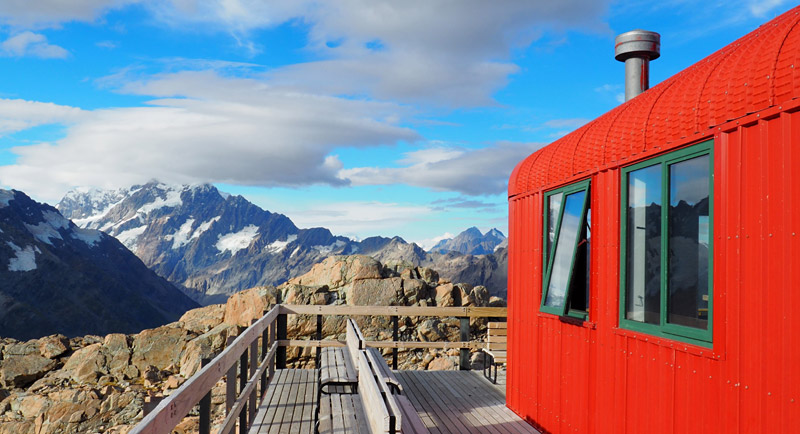
The hut is equipped with gas stoves so you don’t need to carry cooking equipment up the mountain. You do, however, need to bring all your own food and cooking pots.
The hut has an outdoor water supply and solar-powered lighting. It’s comfortable except for the mattresses. They’re paper thin. If you’re an old fellow like me it may be worth bringing an extra hiker’s mattress to ensure a good night’s sleep.
The hut has two bunkrooms, each with 14 mattresses arranged seven per level. That means you’ll be sleeping very close to people you’ve possibly never met before.
Every evening around 6pm a volunteer hut warden gives a talk offering the latest weather updates and information about the area.
Bookings have to be made via the Department of Conservation (DOC) website. This is one hut you can’t just rock up to and expect to find a bunk. In summer 2023-24 it cost $45 per night for New Zealand residents and roughly double that for overseas visitors.
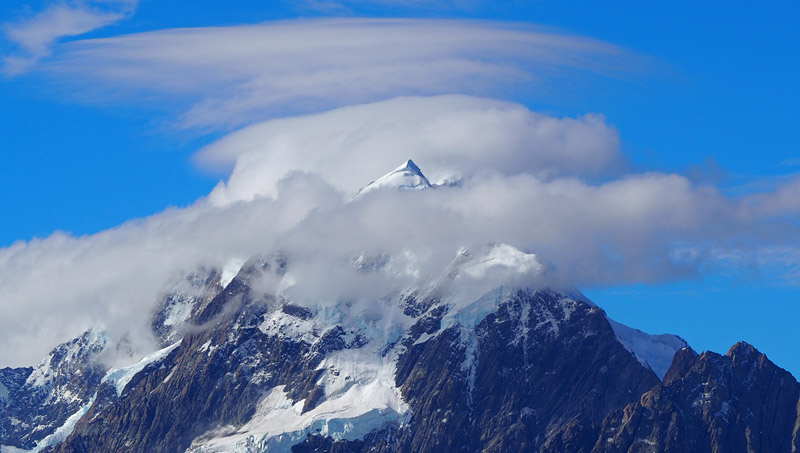
If you’re trying to book a night at the hut, don’t despair if it appears to be booked out months in advance. Because DOC doesn’t charge penalties for cancelling a booking — as long as you don’t leave it to the last minute — many people book well in advance, before they’re certain of their travel dates. That means there are always cancellations and new spaces opening up, especially if you want just one or two bunks.
You can also camp near the hut. That also has to be booked but it’s significantly cheaper. The terrain is rocky and the conditions unforgiving so you need a robust tent and a warm sleeping bags, even in summer.
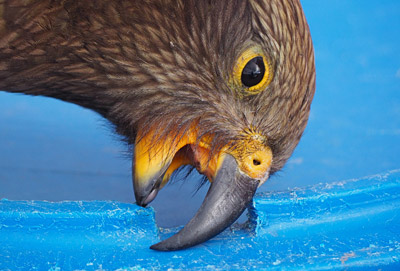
The main problem with camping anywhere high in the Southern Alps is the wildlife. Kea cannot resist a tent.
When I visited Mueller Hut an unfortunate French couple, freshly arrived in New Zealand, had their tent shredded by kea within half an hour. They endured a very cold and wet night.
Note that you should never feed the kea. Human food isn’t good for them and it encourages naughtiness.
For more information check out DOC’s guide to Mueller Hut Track. For more reasons to try tramping* in the South Island, check out my blog posts Braving New Zealand’s Old Ghost Road,
Paparoa Track: NZ’s newest Great Walk and Takahē and naked trampers on the Heaphy Track.
If you know a more deserving candidate for the title of New Zealand’s best overnight hike, I’d love to hear it. Write it in the comments box below.
* That’s the Kiwi term for hiking. There’s no connection to the American use of the word ‘tramp’.

